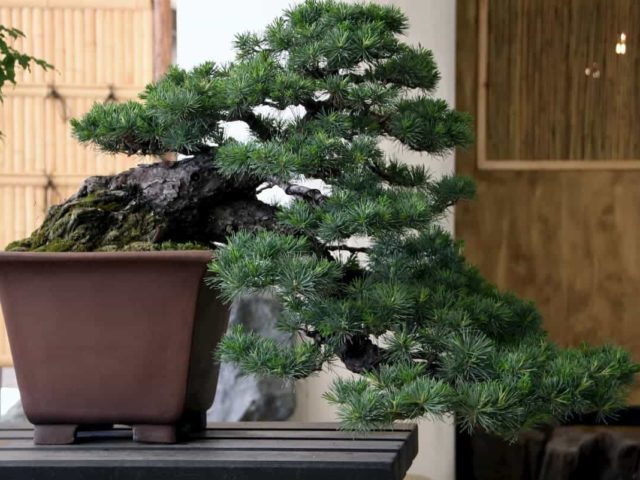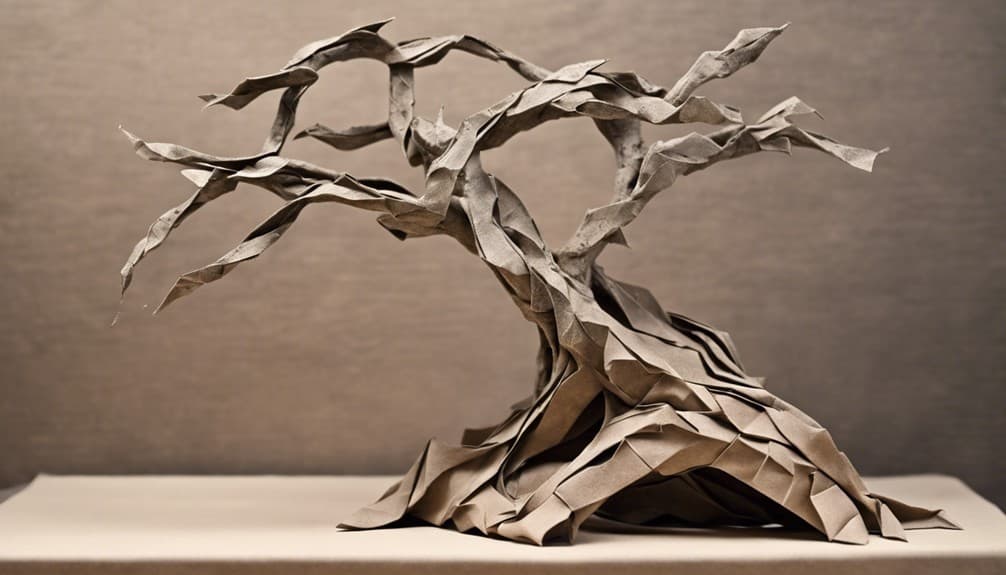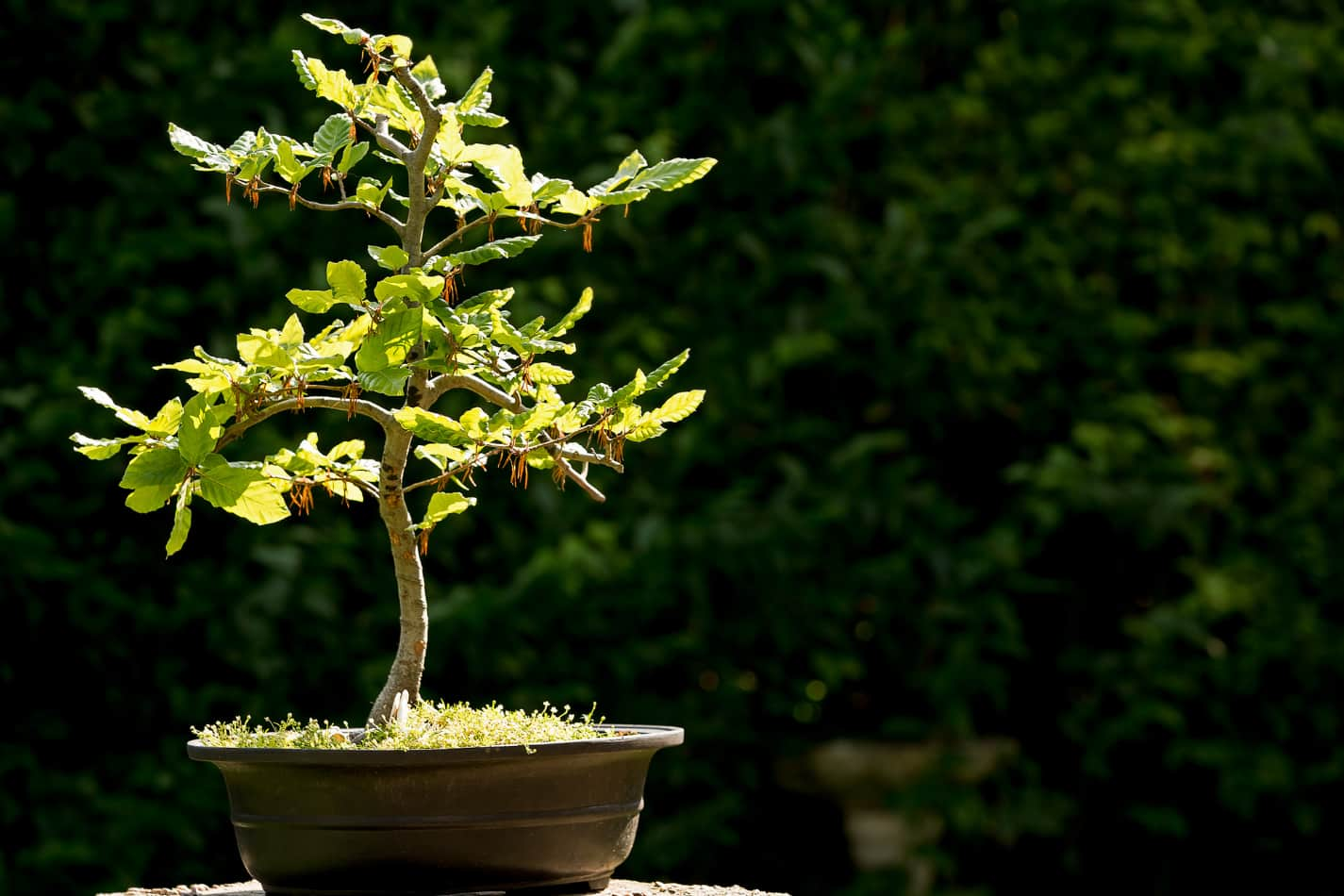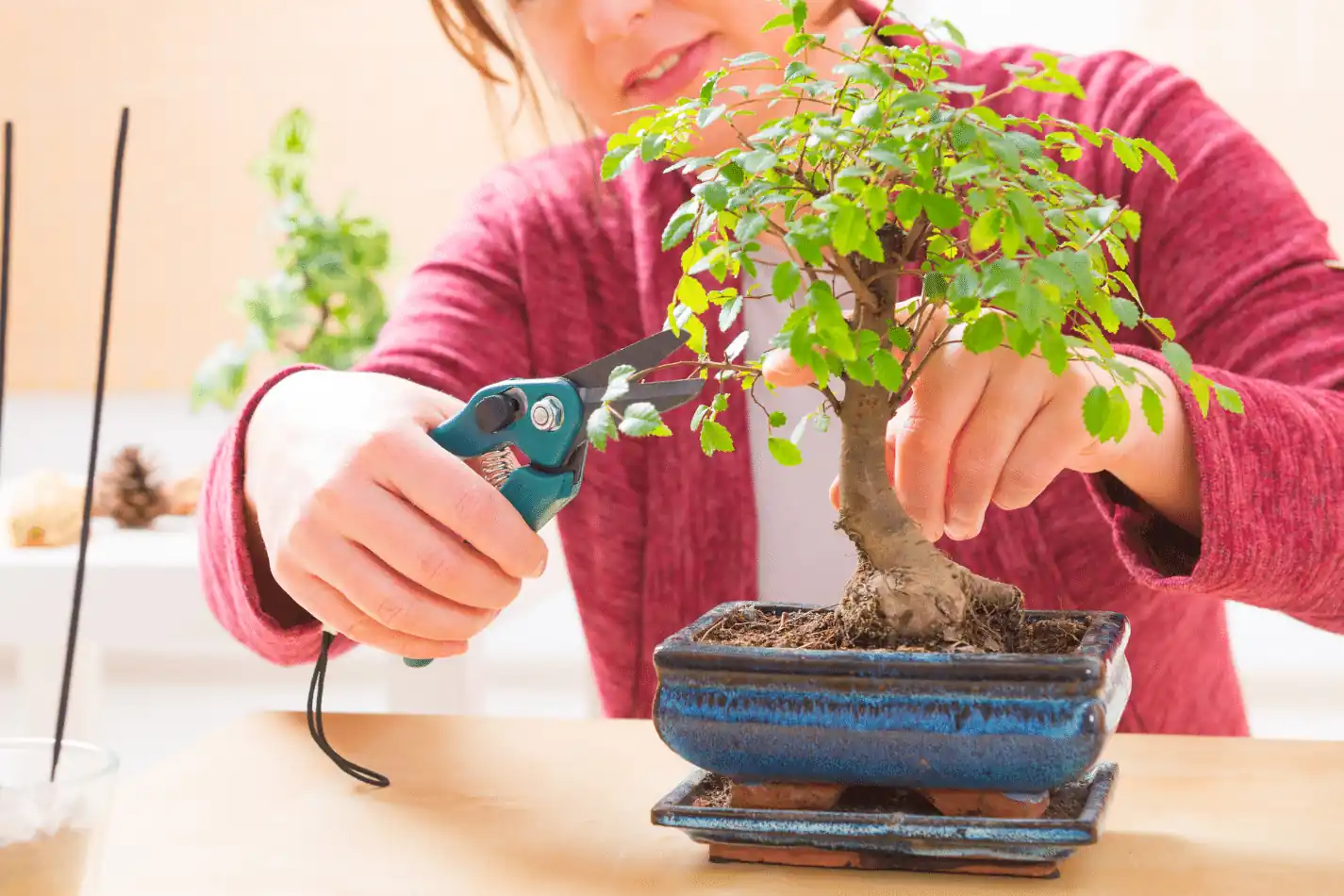Bonsai is a beauty of nature molded by years of hard work. The same tree which can grow into a giant harbor in the ground remains a miniature in the container. But, how do Bonsai trees stay small?
A Bonsai like any other tree when grown in the ground and provided with optimal nutrients, grows into a large tree. But when you follow some basic steps like regular pruning, repotting, and wiring, the bonsai tree adapts to the restricted environment of the container and grows into a small tree in the pot.
You must understand what restricts the growth of your Bonsai, what favors it, and what adversities to avoid to keep your Bonsai in the diminutive size. We highly recommend you read the entire article to understand these facts clearly.
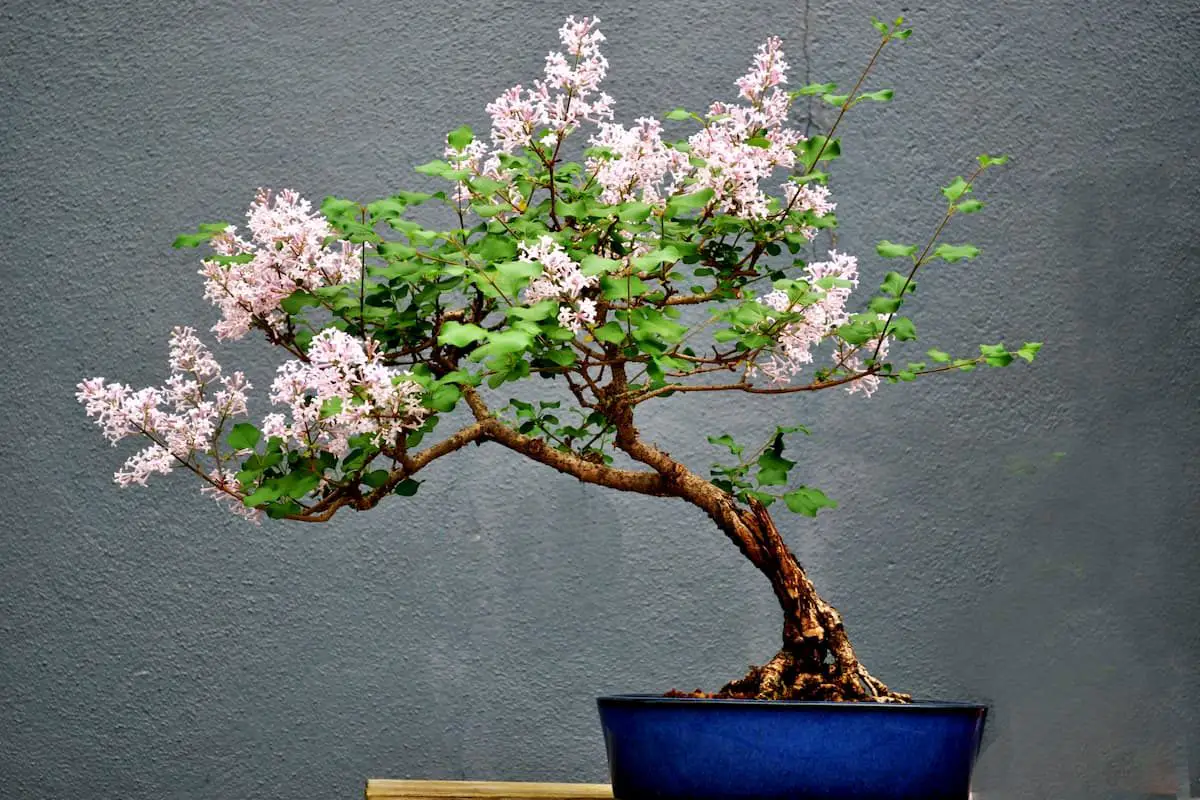
Why Do Bonsai Trees Remain Small?
The art of Bonsai and the masterpiece produced will entirely depend on the artist who made it. The sole purpose of the Bonsai sculpture is to make it look like a scaled-down version of the big tree the same seed could produce.
So, to achieve your aim, in order to make it look aesthetic, it has to stay small and diminutive.
Let’s picture a scenario here. Suppose, a boy was born and brought up in a huge metropolitan city. Due to some unavoidable circumstances, he had to settle down in the far-off countryside.
Although it might be really a bummer for him in the beginning, with time the kid will gradually learn to adapt to the limited resources and pleasant life of the countryside.
All living things in our nature have been programmed to adapt to the environment in the same way. No matter where you originate from, in the end, you learn to adapt.
By the same token, a Bonsai tree also adapts to whatever environment you try to fit it in. It might take years or decades. In the end, you will have a beautiful Bonsai worth all your hard work.
Actually, Bonsai is just the form of art. The actual definition encompasses a lot of steps to creating your ultimate masterpiece.
It so happens that, when you plant a seed in the ground and ensure proper sunlight, aeration, water supply, compost, and good soil – after some time it grows into a large tree. The tree may grow big enough to provide you shelter.
But when you grow it in a small container or pot, you may be providing it whatever it needs to grow but, in a limited amount. The resources aren’t sufficient for it to grow into the larger version but sufficient to produce a miniature form of the tree. This miniature is your desired Bonsai.
So when you restrict the environmental conditions, the Bonsai tree learns to adapt and grow small and diminutive, just the way you desire!
4 Keys on How to Keep A Bonsai Tree Small and Diminutive
The basic shape for Bonsai that all horticulturists prefer is the shape of a triangle with similar or dissimilar sides – however, you prefer it.
You have to prune your leaves and shoots on a regular basis to create this shape. This shape is unique for Bonsai and is mainly responsible for the aesthetic look.
What separates Bonsai from other plants is its size. The beauty of the tree lies in its miniature size. If you follow some basic steps, you can easily maintain the smaller size of the tree.
Experts all over the world suggest the four basic steps – Pruning the tree, pruning the roots, repotting, and wiring.
Apart from these, you may also try restricting the growth of the tree. Let’s take a brief look at the methods used commonly:
Pruning
Pruning means cutting off a part that you do not need for the time being. It involves a number of different techniques. Pruning parts lets you store the growth potential in different areas of the tree.
To maintain the shape and size of Bonsai, you have to prune the leaves, the roots and the shoots. This is the most effective way to keep your tree small.
Pruning the shoots:
- Choose a suitable height depending on how big you want your tree to be.
- After you are certain about the height, choose the node from where you want to start your new growths.
- Look if the branches or nodes at this level are strong enough to support new growth.
- Cutting off at a point above this level allows the growth potential to die back to the nodes before it. So new growths can sprout from this point onwards.
- You can use a pair of pruning scissors or blades.
- The plant may look bare for a while. But after the new nodes start to sprout, with the leaves and shoots growing eventually you can create whatever shape you desire.
Take your time and let it grow back!
Things to remember while pruning the shoots:
- Don’t worry about pruning wounds. They heal very nicely over time.
- Don’t use blunt scissors. They greatly hamper the pattern of new growths.
- Using a sharp tool will make clear cut uniform edges. The new nodes growing from here will grow uniformly.
- Always remember to keep the soil dry after pruning. Don’t over hydrate, don’t keep it wet all the time. This will ultimately rot your roots.
- Species like Ficus grow very beautifully and can obtain the desired shape really quick!
Do it once a year. It will take a great deal of time to regrow. So, pruning the shoots actually depends on the species you choose. Junipers grow really slow!
Pruning the leaves:
This is very easy to perform and doesn’t require much hard work. If you know where to prune, your job is half done. Pruning or reducing the size of leaves can be very effective in maintaining the size of Bonsai.
- Choose a branch where many leaves have grown. A branch which can support more than 20 leaves is strong enough.
- If most of the leaves have fallen off, choose a branch that is woodier than the others. A woody branch can support more leaves than a thin and slender one.
- Now, prune all the leaves in this branch down to two leaves only. This part may be tough for you as it takes years of hard work and patience for the leaves to grow back.
- This will only help you to get the aesthetic look you desire and to make your tree stronger than ever.
- Repeat the process in other parts. Choose more branches and do the same.
Things to remember while pruning leaves:
- Do not prune all the leaves. Keep it down to two.
- Over pruning will delay the growth and you will have to wait longer than ever.
- Sometimes over pruning may result in pruning of the apical growth buds. This is very unfortunate as your tree stops growing at all. So, take great care while pruning. Understand the anatomy of your tree first!
- While pruning, feed your tree regularly. To grow back it requires nutrients. Provide all you can!
There are basically two different kinds of pruning for leaves – The structural pruning and the maintenance pruning. Experts suggest doing the former once a year, at the end of winter or during spring. And the later after every 4 to 6 months.
Pruning the Roots:
Roots are the most essential part of your Bonsai. You must take great care of your roots or you will end up with a malnourished Bonsai. They receive all the nutrients required for survival. Healthy roots beget a healthy plant.
So, you must be thinking why prune the roots? As astonishing as it sounds, pruning the roots help them to grow faster and spread more. If they grow more, they will intake more nutrients.
- Break the soil and identify the roots.
- Cut the smaller roots from the sides. Then cut the bigger ones too.
- Give it a proper shape. The roots should look nice and radially arranged.
- Being radially arranged, they can spread evenly on all sides. So, there is even distribution of nutrients.
- More roots render more nutrients and more Oxygen – facilitating more growth.
- The trunk gets thicker and the tree remains just the size you want!
Things to remember while pruning the roots:
- Don’t cut too much along the length of the roots.
- Identify your tap roots first. Then start cutting from the sides. Cut the bigger roots at last.
- Carefully remove all the soil first and then prune roots.
- Break the soil loose with a sharp tool.
- Don’t over hydrate. Smaller roots tend to rot sooner.
How often you should prune roots depends largely on the species you choose to grow. Some species need root pruning on every alternate year; while some require every year.
Pruning till a decade may prove to be very beneficial for your plant.
Repotting
This simply means transferring your Bonsai from one pot or container to another. This helps in growth of the plant. Choosing a small pot will allow the Bonsai to remain small too.
- Remove the tree from the existing pot.
- Using sharp gardening equipment say, a rake. Clear the soil from the roots. Break the soil loose.
- Break it from the centre as well. Remove any remaining soil.
- Take a clean pot or tray. Choose a small pot.
- Remove all the dirt or lime deposits from the pot.
- Identify the front of your tree.
- Put soil in the pot. Adjust the height of your tree. Put some extra soil to cover the roots on the sides properly.
- Water your tree. Spraying helps to distribute water evenly.
- Do not report too frequently.
Restricting the Growth
This mainly involves restricting the growth favoring factors during the growth period of your tree. A few are worth mentioning:
- Keeping in full sun – Sunlight is the food that keeps your trees alive. But keeping in high intensity sunlight hampers the growth of the leaves. This method may be used to restrict the size of the leaves. Although excessive heating may dry up the soil, which hampers the overall growth of your Bonsai.
- Growing indoors – In warm and humid places, the leaves grow larger. The natural sunlight comes in controlled amounts through the windows so leaves can grow properly. Avoid this if you intend to keep the size small.
- Replace – Replace winter growths with summer growths.
- Reduce watering and fertilizing frequently – Keep your plant healthy. But reduce watering or applying composts too frequently as it fastens growth.
Wiring
Wiring mainly helps to fix the shape of your Bonsai branches and trunk. This is more like a prerequisite for the other steps. Once you have fixed the shape, go for pruning or repotting or whatever method you find easier.
With the help of a thin wire, shape your branches. Wind it up around the parts you desire to shape and let it stay like that for a year. You will definitely notice changes in the shape!
After that go for pruning and turn your tree into the miniature you want.
How Long Does It Take to Grow A Standard Sized Bonsai?
Growing a Bonsai is all about testing your patience. It may take a great deal of time to achieve the shape and size you desire. But the satisfaction you get after reaching your goal is the greatest feeling ever! The Bonsai is the result of your years of endeavours.
It takes almost 10 to 12 years to reach a standard size. After 5 years of planting the seed, the Bonsai becomes capable of wiring and shaping/pruning.
But the plant attains its maturity after almost two decades. The oldest Bonsai in the world is about 800 years older and it is still alive and healthy.
Bonsai are slow growers, by nature. As you are restricting its usual growth in the pot, it is quite evident that the tree is not getting sufficient nutrients to grow as a large tree.
So, it retains its smaller size and grows slowly. Having patience is your key to success here!
Is Bonsai Different Than Normal Trees?
The same seed which can grow a big tree in the ground, can grow a Bonsai in a pot. As the name itself means – planting on a small tray or pot. So, a Bonsai is no different than a normal tree.
When the same tree is grown in the ground, it will grow to be a larger tree. This is what makes the Bonsai art so mysterious and so sophisticated.
All species of trees when grown in this way, can be converted into a small-scale Bonsai. But the commonly practiced ones are – Ficus, Chinese Elms, Juniper etc.
Can Your Bonsai Tree Grow Bigger?
Yes, your Bonsai like any other regular tree when grown in the ground will grow bigger. It will have the same thick trunk, the same tall height, the same flowers and leaves.
On the top of that, you don’t have to wait for years to achieve this result. Within a year, the tree will grow sufficiently large.
But if you grow it bigger, that’s just not the purpose of Bonsai. Bonsai are supposed to be small tiny trees that hold the vibe of sophistication around them.
It is extremely aesthetic and incredibly beautiful just the way it is. It is like the tombstone erected in the memory of the hard work and patience of the artist who created it.
Things to Avoid in Order to Keep Your Bonsai Small
A lot of beginners tend to care way too much for their Bonsai that soon it dies prematurely. Everything must be done in limits, in controlled amounts.
If you water your plant way too much than it needs, if you feed it more than necessary, it will only worsen things; things may go out of hand. It is essential that you understand the Do’s and Don’ts of the art of Bonsai.
There is no perfect guide for Bonsai. But you can learn a great deal from the experts who have had years and years of experience in Bonsai horticulture. In a nutshell, they suggest to look out for these especially:
Do’s:
- Keep your trees under sufficient sunlight.
- Use the right size of container while potting or repotting.
- Use appropriate gardening tools.
- Use a good quality soil with a good pH.
- If you are growing a sacrificial branch, prune it at the right time.
- Ensure sufficient aeration and humidity.
- Choose a suitable species as per your environmental conditions and climate.
- While restricting growth, make sure you are providing adequate nutrition to your tree.
- If you are growing indoors, make sure the plant is getting ample amounts of natural sunlight.
Don’ts:
- Don’t grow it in the ground for too long.
- Don’t feed too much. Hydrate your plants regularly but just the right amount it needs.
- Don’t use too much fertilizer. It might lead to over nutrition.
- Don’t prune more than necessary.
- Don’t use blunt tools or equipment.
- Don’t wire too tightly.
- Don’t keep the soil wet for too long.
- Don’t grow in too much alkaline soil.
Final Thoughts on How Do Bonsai Trees Stay Small
As you have read there are multiple methods or ways that you can use to manage and control growth of your bonsai to keep them growing how you want and at the rate you prefer.
If you are just learning about bonsai trees and looking to purchase high quality trees that will likely live longer than you then I would highly suggest checking out Bonsai Boy Trees as they are a long lasting New York business that provides trees for all price ranges!



